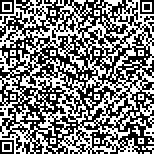下载中心
优秀审稿专家
优秀论文
相关链接
摘要

多角度遥感观测是研究植被冠层BRDF(Bidirectional Reflectance Distribution Function)特性的重要手段,但目前对森林冠层进行连续间隔采样的多角度遥感观测及数据较少,热点方向的观测尤为缺乏。本研究基于无人机多角度高光谱成像系统,在主平面上对针叶林冠层以等角度连续间隔采样进行多角度观测,获取了主平面上多角度(包括热点和暗点)高光谱影像,并将观测结果与四尺度几何光学模型模拟结果进行对比分析。多角度观测获取的植被冠层反射率呈现出典型的植被方向反射特征,后向大部分角度观测的冠层反射率高于前向,在热点处出现峰值,在暗点附近方向出现最低值,观测天顶角VZA(View Zenith Angle)较大时表现出明显的“碗边效应”。结果表明:(1)观测的针叶林冠层反射率及BRDF特性与四尺度模型模拟基本一致,但红光波段模拟的热点反射率稍低于观测,前向观测VZA较大时模拟与观测结果差异稍大;(2)冠层结构及叶片光学特性的差异会导致观测到的BRDF特征不同;(3)观测的针叶林冠层BRDF呈现明显的光谱效应,不同波段呈现的各向异性特性不同,红光波段各向异性最强,近红外波段最弱;(4)BRDF的光谱效应差异导致观测到的植被指数也表现出各向异性,NDVI(Normalized Difference Vegetation Index)、PRI(Photochemical Reflectance Index)和MTCI(MERIS Terrestrial Chlorophyll Index)在热点方向最低,EVI(Enhanced Vegetation Index)在热点方向最高。本研究中无人机多角度成像观测提供的角度和高光谱信息,尤其是热点和暗点信息,在地物识别及分类、植被冠层结构反演及碳循环关键参数获取等研究方面具有较好的应用前景,在其它地物反射或热辐射等方向性特性研究中也具有较大的潜力。
Multiangle remote sensing observation is critical for the study of the Bidirectional Reflectance Distribution Function (BRDF) of vegetation canopies. However, sampling the bidirectional reflectance of forest canopies at a small fixed angular interval over a certain observation plane is still difficult at present, and capturing hotspot and dark spot images is especially challenging. The objectives of this study are (1) to obtain bidirectional hyperspectral reflectance images, including hotspot and dark spot, at the principal plane for two conifer forest canopies, (2) to analyze the observed canopy BRDF characteristics, and (3) to compare and validate the observation with four-scale geometric optical model simulation.The two coniferous forest sites are located in the Saihanba Mechanical Forest Farm in Hebei Province in northern China. A multiangle hyperspectral observation method was developed on the basis of an Unmanned Aerial Vehicle (UAV) imaging platform. A hyperspectral imaging sensor was mounted on the multirotor UAV with a rotatable gimbal. The View Zenith Angle (VZA) of the hyperspectral sensor was controlled by adjusting the pitch angle of the gimbal at each observation point over the flight of the UAV. The VZAs ranged from 60° backward to 60° forward with an interval of 10°, along with the hotspot and dark spot angles. The observed UAV images were processed from digital numbers to reflectance by using a standard gray panel with known reflectance placed in the observation area. The UAV images were then resampled to 60 m to examine the reflectance at the canopy scale. Canopy reflectance was also simulated with the four-scale model and compared with the observation.Bidirectional reflectance, including hotspot and dark spot, images of conifer forest canopies were effectively observed using the developed multiangle UAV observation method. This method has the advantage of making hyperspectral and multiangular observations at the same time. The canopy reflectance values are higher at backward observation and highest at the hotspot direction compared with those at forward directions. The observed BRDF shapes differ at the two study sites with different canopy structure and leaf optical properties. The bowl effect with increasing reflectance with VZA is observed when the VZAs are larger than 40°. The results are as follows: (1) The BRDF shapes and canopy reflectance simulated using a four-scale model are consistent with the observation, except for a minimal underestimation at the hotspot in the red spectral bands and some deviation in the near infrared (NIR) bands at large VZAs in the forward direction; (2) The BRDF shapes differ in forests with different canopy structure and leaf optical properties; (3) The observed bidirectional reflectance of the two coniferous forests demonstrates distinct spectral variability of BRDF effects. The reflectance anisotropy is highest in the red bands and lowest in the NIR bands; and (4) Anisotropy of vegetation indices, including normalized difference vegetation index, photochemical reflectance index, MERIS terrestrial chlorophyll index, and enhanced vegetation index, is observed due to the spectral variability of BRDF effects.The multiangle UAV platform is able to capture bidirectional reflectance images effectively, especially in the hotspot and dark spot directions. Compared with satellite-based, aerial, and tower- or ground-based multiangle observation methods, the UAV platform is more effective and flexible with a much lower labor and financial cost. However, the application of this UAV platform at a large spatial scale is limited due to the small coverage of UAV images compared with satellite images. The multiangle UAV platform has great potential in the research of bidirectional characteristics of various targets.

